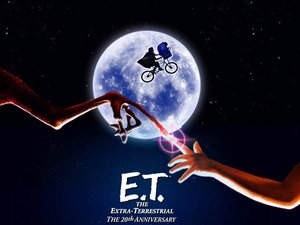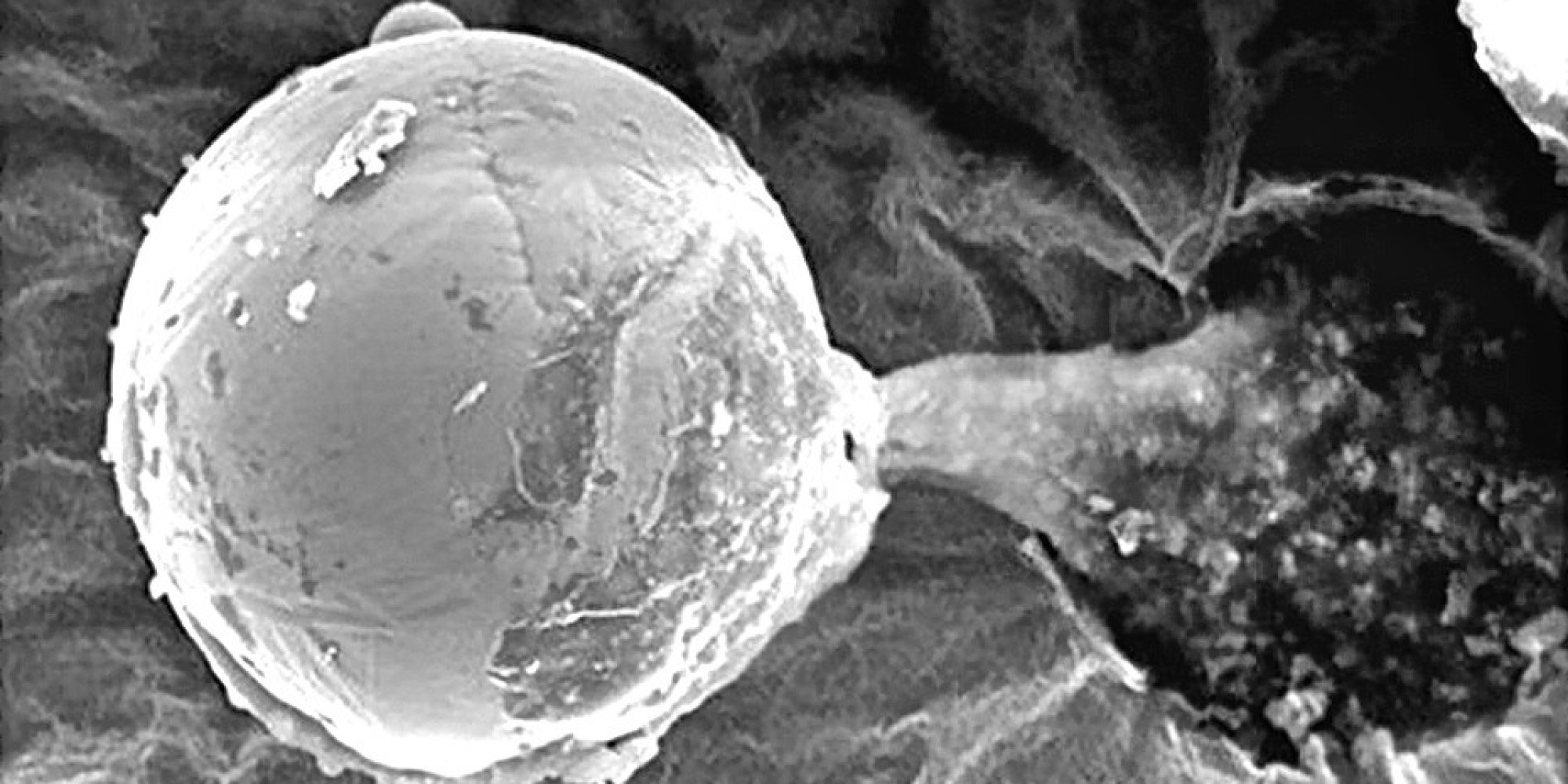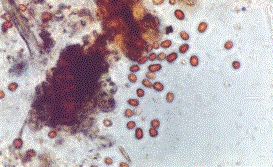Leonard Nimoy leaves legacy beyond science-fiction




In a story that is abstract, hard to grasp and comprised of details and names science fiction writers might be jealous of, Kasperspy is finally able to point an indirect but definite finger at the NSA.
Last Monday, February 16th, at Kasperspy’s Security Analyst Summit, Kaspersky security researchers were finally prepared to present their findings linking the 15 year old NSA handle, “Equation Group”, to hundreds of files including plug-ins and upgraded variations going back fifteen years. Kasperspy operatives were initially able to identify the nls_933w.dll module by correlating a list of hard drive vendors in part of the code with a list of hardware commonly infected by a piece of code identified five years ago, dubbed the nls_933w.dll module.
Vitaly Kamluk is the voicebox for Kaspersky Lab’s Global Research and Analysis Team. He gave the now week-old-but-already-infamous talk, offering several long-coming answers to questions anyone interested in high-level cyber security have been otherwise fruitlessly asking for years. Kamluk explained that the module is in many ways the “ultimate cyberattack tool”. It’s possibly the crowning achievement of the so-called Equation Group. He explained how the available evidence implies Equation group is about 15-years-old and gave detailed reasons why the malware is evidence that the same group responsible for the nls_933w.dll module must have had confident and confidential knowledge of Stuxnet and Flame.Personally, I have trouble vetting the information to verify Kasperspy’s accusation, and it is difficult to link Equation Group to the NSA. This is the nature of information warfare, though; the people who are great at concealing intentions and information are going to be shrouded in mystery even after someone is able to accuse them. What makes Kasperspy vs. Equation Group so noteworthy is that a private security firm seems to have the clearest understanding of cyberwarfare, out of everyone who has the guts to openly discuss such a formidable potential enemy. Equation Group is known to be behind several security operations of dubious benefit to anyone other than the United States, with targets including the most-feared zero-day exploits that can literally ruin computers, including systems that are running critical military or utility functions for states. Equation Group has been accused without concrete proof of espionage against increasingly sensitive targets. The current list of victims includes governments, energy companies, embassies, telecoms and many other entities, mostly based in Russia, Syria, Iran and Pakistan.
The targets imply Equation Group is acting on behalf of US interests but until people know the endgame of such security violations or the true identity of Equation, there are more questions than answers – probably by design.
Read more about the internet:
|
Jonathan Howard
Jonathan is a freelance writer living in Brooklyn, NY |

Panspermia is the (hilarious) name given to a theoretical discussion about terrestrial life originating from someplace extraterrestrial, beyond Earth. The panspermia argument began with Francis Crick, the co-discoverer of the structure of DNA molecules. If “panspermia” sounds like a science fiction idea from the 70’s you aren’t thinking too far off. While Crick is famous for the DNA thing, he actually had a more implausible idea about aliens and the origin of life. One that never stood up to scientific scrutiny but makes its way back into scientific debates from time to time.

Who knows? Maybe this guy started it all.
Over the years there have been several discoveries panspermia supporters point to excitedly, claiming they have found proof of alien life. The latest new piece of evidence comes from Milton Wainwright at The University of Buckingham. While the object was found embedded in a weather balloon designed to collect upper atmosphere debris, and it is undeniably a biosignature of some sort, it doesn’t definitively support the panspermia theory, despite recent, high-profile headlines.
Wainwright himself admits this: “Unless, of course, we can find details of the civilization that is supposed to have sent it in this respect, it is probably an unprovable theory.”
Um, yeah. So the guy quoted all over the new evidence is actually the first in line to warn against jumping to the conclusion that we are all aliens. Still, it’s a very exciting theory. Let’s take a look at other samples from various parts of Earth and beyond that have allowed dreamers to fabricate theories of life’s supposed extraterrestrial origin.
Biosignatures don’t have to be chemical. They can be magnetic, as suggested in this space.com article from 2011, or it could be described by the morphology, meaning the shape and size of fossilized evidence could indicate a living thing once left its mark. Biosignatures that support the idea of alien life or panspermic origins to terrestrial life are inconclusive but that doesn’t stop enthusiasts from pointing and claiming they have proven the theory correct. Here’s why the evidence supporting panspermia is still inconclusive:

Meteorite ALH84001
Tiny, microscopic magnetite crystals were found in meteorite ALH84001. Not a lot can be proven from this undeniably interesting piece of space rock. The meteorite is likely Martian in origin. It’s famously debated because of a handful of potential biosignatures. Some scientists insisted only bacteria could have caused the crystal formations . They turned out to be wrong; similar formations can be found forming by complex physics, without life intervening.
Several other “possible biosignatures” have been investigated int he sample. There is a working hypothesis but not an empirical confirmation of life. Proof of an extraterrestrial form of life would mean these so-called biosignatures could have been formed by a living thing and only a living thing – which is clearly not the case. One such biosig was a small-pattern texture that resembled one from a known bacteria. A scientific majority ultimately decided these textures were small to be fossilized cells. Meteorite ALH84001 is a curiosity, a rare find and an amazing natural occurrence but it is not proof of the panspermia theory.
Then there is the Kerala red rain phenomenon happened in Kerala, India from 25 July to 23 September 2001. Heavy showers brought a peculiar, red-coloured liquid. The “blood rains” fell all along the southern Indian state of Kerala staining fabrics and causing alarm. Other colours were reported but the majority of reports and samples were red in color. It’s happened several times since, most recently in June 2012.

Kerala Red Rain
A photo-microscopy examination brought an initial rumor to the media: the source oft he red color was a meteor shower or explosion from asteroid particles heating up on entry to Earth’s atmosphere. Early misreports like that often cause rumors or conspiracy theories when the official story gets redacted. In this case, a detailed study commissioned by the Government of India announced the rains had been dyed by airborne spores originating from a prolific colony of terrestrial, forest algae.
It’s still a mysterious phenomenon but the genetic makeup of the cells found in red rain is far too common for the sample to be extraterrestrial.
Tardigrades

Tardigrades are so durable they seem to be able to survive for a long time when they enter a strange, dehydrated state. Tardigrades are one of the only species who can suspend their metabolism and going into a state of cryptobiosis. Several varieties of tardigrade can stay hibernating for nearly 10 years. While in this state, tardigrade metabolism falls to 0.01% and their water content goes down to 1% of normal.
Tardigrades would make excellent space travellers because they can withstand extreme environments most other lifeforms would be destroyed in, including extremes of temperature, pressure, dehydration and radiation, environmental toxins, and outer space vacuum conditions.
Wikipedia points out: tardigrades are the first known animal to survive in space. On September 2007, dehydrated tardigrades were taken into low Earth orbit on the FOTON-M3 mission carrying the BIOPAN astrobiology payload. For 10 days, groups of tardigrades were exposed to the hard vacuum of outer space, or vacuum and solar UV radiation.[3][38][39] After being rehydrated back on Earth, over 68% of the subjects protected from high-energy UV radiation revived within 30 minutes following rehydration, but subsequent mortality was high; many of these produced viable embryos. In contrast, dehydrated samples exposed to the combined effect of vacuum and full solar UV radiation had significantly reduced survival, with only three subjects of Milnesium tardigradum surviving. In May 2011, Italian scientists sent tardigrades on board the International Space Station along with other extremophiles on STS-134, the final flight of Space Shuttle Endeavour. Their conclusion was that microgravity and cosmic radiation “did not significantly affect survival of tardigrades in flight, confirming that tardigrades represent a useful animal for space research.” In November 2011, they were among the organisms to be sent by the US-based Planetary Society on the Russian Fobos-Grunt mission’s Living Interplanetary Flight Experiment to Phobos; however, the launch failed. It remains unclear whether tardigrade specimens survived the failed launch.
Tardigrades can survive in space but that doesn’t mean they came from space. They have strong genetic ties with several other animals in the Panarthropoda group. They appear to have evolved on Earth but will likely be studied for years to come because of the adaptable nature of Earth life they represent.
Like a lot of pseudo-science, there are elements of hope and truth to tons of the details. Labeling bad science or non-science for what it is enables us to dream bigger and keep a better-informed, watchful eye on the available data. If you are feeling the sting of yet another science news story letting you down, recharge your creative side with this 90’s CGI classic that illustrates the crucial principles of panspermism:
Jonathan Howard is a skeptic and freelance writer working for Cosmoso.net
You can reach him at this email address: [email protected]
or find him on facebook: https://www.facebook.com/contact.jonhoward
|
Jonathan Howard
Jonathan is a freelance writer living in Brooklyn, NY |

What role would optical illusions, graffiti and QR code technology play in weaponizing an image, sound, video or string of words to influence or control the human mind? Jonathan Howard takes a look at technology and the theoretical future of psychological warfare with the second part of an ongoing series. This installment of Can Information be Weaponized? is Memetic Warfare and the Sixth Domain: Part Two in which Jonathan Howard continues the train of thought about a possible delivery system for harmful memes by exploiting common mental weaknesses, including optical illusions, graffiti, and QR Code Technology. If you haven’t read it yet, you should start with Can Information be Weaponized? is Memetic Warfare and the Sixth Domain: Part One.
It’s an aspect of human psychology most readers will already be aware of: optical illusions. As Neil DeGrasse Tyson once pointed out, “an optical illusion is just brain failure”.
People like to trust their perception of what is happening in the world around them but there are circumstances where our perception of an image or set of images can’t be relied on as accurate. An illusion doesn’t have to be optical; we’ve all experienced an earworm, a piece of music, a movie quote or other form of recorded audio, which, once heard, seems to play with vivid realism. An earworm can make a sound seem to play on infinite repeat, often leaving the victim feel plagued by a sound that is not truly there.
Being fooled is a novelty and it can be fun but the video clip below demonstrates how illusions don’t just mess with your eyes(or ears). In certain, often common, circumstances illusory effects can actually modify the way your brain works. In January, 2014, vlogger Tom Scott created a recent video to explain the nature of the McCullough Effect, an optical illusion that can change the way your brain interprets colors in relation to striped patterns.
The video mentions the McCullough Effect can have lasting effects – potentially 3 months. In the interest of remaining unbiased I have not yet experimented but some Reddit users went ahead and tried it with believable results. Try it at your own risk~!
“You couldn’t rub out even half the ‘Fuck You’ signs in the world” ~ Holden Caulfield in J.D. Salinger’s A Catcher in the Rye
It would be difficult to weaponize the principle behind The McCullough Effect because the worm takes several minutes of intentional concentration to take effect. It’s a far cry from Medusa’s statue-creating gaze. Aspects of media can work much faster though. An offensive or upsetting image encountered via social media is often dubbed “cannot be unseen”. In J.D. Salinger’s A Catcher in the Rye, main character Holden Caulfield laments the human tendency to exploit written language with malice whenever he sees school kids exposed to vulgarity whenever a, “fuck you”, scrawled on a public wall. The illustration below illustrates this point by putting a gratuitous swearword in your head but has another possible harmful-meme delivery system: QR Code

Much in the way you can’t unsee a curse word written in a public space, a day may come when a more complicated curse-like state might be induced via QR code.
In February, 2014, Dr. Nik Thompson of Murdoch University pointed out QR codes can easily be exploited by cybercriminals because they can’t readily be interpreted by humans without the aid of a machine adding, “There have already been cases of QR codes used maliciously to install malware on devices, or direct them to questionable websites.”
Technically, by exploring the idea of exploited QR code, I’m making the same mistake as Diggins and Arizmendi, regarding compromised computer-assisted operating systems as a form of sixth domain warfare, when that would actually count as the fifth domain, cyber warfare. A compromised operating system on a phone or other smart device might seem like your brain is being attacked but the device is the only thing you’d be losing control of.
A truly weaponized piece of media might combine various elements of what I’ve described. Weaponized information would have to be:
Thanks for reading Can Information be Weaponized? Memetic Warfare and the Sixth Domain: Part Two~! You can go back and read Part One here. Any suggestions, contradictions, likes, shares or comments are welcome.
Jonathan Howard posted this on Monday, February 9th, 2015
|
Jonathan Howard
Jonathan is a freelance writer living in Brooklyn, NY |

Can an image, sound, video or string of words influence the human mind so strongly the mind is actually harmed or controlled? Cosmoso takes a look at technology and the theoretical future of psychological warfare with Part One of an ongoing series. This installment of Can Information be Weaponized? Memetic Warfare and the Sixth Domain: Part One is about a possible delivery system for harmful memes. You can click here to jump to Part Two.
Chloe Diggins and Clint Arizmendi wrote an article for Wired Magazine back in Dec., 2012 entitled, Hacking the Human Brain: The Next Domain of Warfare. The piece began:
It’s been fashionable in military circles to talk about cyberspace as a “fifth domain” for warfare, along with land, space, air and sea. But there’s a sixth and arguably more important warfighting domain emerging: the human brain. ~Hacking the Human Brain by Chloe Diggins and Clint Arizmendi, 2012, Wired Magazine
Hacking the Human Brain concentrated on the vulnerabilities of Brain-Computer Interface or BCI, giving some examples about how ever-increasing human reliance of computer-aided decision making in modern warfare opens users to security risks from weaponized hacking attempts. It’s a great article but the article is not actually discussing that sixth domain it claimed to in that opening paragraph I quoted above. The attacks described by Diggins and Arizmendi are in the nature of exosuits and mind-controlled drones being overridden by hackers, exhibiting the fifth domain of warfare of the given paradigm. What kind of attack would truly compromise, subjugate the sixth domain, the domain of the mind?
“Wait a minute, Juanita. Make up your mind. This Snow Crash thing—is it a virus, a drug, or a religion?”
Juanita shrugs. “What’s the difference?” ~ From Neil Stephenson’s Snow Crash, 1992
In Neil Stephenson‘s 1992 novel, Snow Crash, the hero unravels a complicated conspiracy to control minds using a complicated image file which taps into the innate, hardwired firmware language the human brain uses as an operating system. By simply viewing an image, any human could be susceptible to a contagious, self-replicating idea. The novel was ahead of its time in describing the power of media and the potential dangers posed by creating immersive, interactive virtual worlds and memes with harmful messages or ideas that can spread virally via social media. In the world of Snow Crash, a simple 2d image was the only technology needed to infect the human mind, forcing the victim to comply. The word and much of the concept of a meme had yet to be developed in 1992 but as the above quote points out, there are several, well tested mind control systems in existence already, including viruses, drugs and religions(Check out Snow Crash by Neil Stephenson at Amazon.com).
Stephenson waxed academic about language, history and the idea that ancient Sumerians had already uncovered this ability to hack the human mind. He later credited a 1976 book by Julian Jaynes, The Origin of Consciousness in the Breakdown of the Bicameral Mind as an influence and inspiration for Snow Crash. In Origin of Consciousness, Jaynes coined the term bicameralism, hypothetical psychological supposition that the human mind used to be divided into 2 main language functions. One part of the human mind was for speaking and the other was for listening, aka bicameralism. Jaynes claimed this state was normal in primates until a relatively recent change in language and cognition happened to humanity, supposedly about 3000 years ago. Stephenson’s fictional technology attacks modern man’s anthropologically latent compulsion to automatically accept orders when the orders are presented in the correct language.
Is a mind-control meme only the stuff of science fiction? In real life, how susceptible are humans to this kind of attack? Check out Can Information be Weaponized? Memetic Warfare and the Sixth Domain Part Two.
Thanks for reading Can Information be Weaponized? Memetic Warfare and the Sixth Domain: Part One~! Any suggestions, contradictions, likes, shares or comments are welcome.
Jonathan Howard posted this on Monday, February 9th, 2015
|
Jonathan Howard
Jonathan is a freelance writer living in Brooklyn, NY |

By Karen Dale, Lancaster University and Brian Bloomfield, Lancaster University
The potential of “smart drugs” that improve our memory, focus and capacity for work has taken a hold of the popular imagination. Two recent blockbuster films have played a part. Both Limitless and Lucy wove stories around the possibilities of humans using drugs to access more of their brain power and gain super human abilities.
There’s a risk, however, that as this idea becomes more ubiquitous – in fictional accounts and real life – it will create a new norm in workplace culture. A quick Google of “the real limitless drug” shows the extent to which fantasy has spilled over into curiosity, debate and the potential for experimentation.
Part of what the fictional accounts seen in Limitless and Lucy do is change how drug use is described in relation to work. For example, when it comes to drug use among employees, the conventional account assumes drugs are recreational, taken outside of work, with effects that are basically inimical to being productive. Indeed, drug-taking is normally seen as a problem for management, with testing regimes and disciplinary policies devised in order to control and eliminate what is seen as bad behaviour.
But the new attitudes suggested through these films are different. They set the potential for an opposite scenario: where people take drugs to make themselves more productive, work longer, harder, and generally be more successful. The risks of the drugs involved – and there are many – are explored in the fictional accounts, but in the context of the idea of huge potential for personal change and high performance.
Indeed, there is some research that shows how certain drugs used for conditions such as Attention-Deficit Disorder (Ritalin), narcolepsy and shift-work disorder (modafinil), might provide wider possibilities for greater concentration, improved memory and focus in individuals not suffering from those conditions. However, even though a drug might be effective at improving focus on a task or the ability to concentrate for longer periods of time, that might well be at the expense of other faculties. Thus, although the efficacy of such drugs is contested within the scientific community, there is nonetheless an emerging debate as to how this technology might be used in the workplace.
These kinds of drugs suggest opportunities to extend people’s working lives, to motivate employees in less stimulating jobs, allow entry to roles that people might have previously found a stretch – and, of course, to allow employees to work more effectively, harder and for longer.
There is anecdotal evidence for the use of drugs to enhance performance in extreme forms of work for many years – military staff, emergency service workers, medics – roles where extended periods of heightened concentration are literally a matter of life and death. Overall, our knowledge of the actual use of smart drugs by individuals looking to improve their performance at work is inevitably limited because the use of such drugs is predominantly off-label.

TijanaM
HR Magazine in the US ran a feature in 2005 on the problem of methamphetamine abuse among white collar professionals who are stressed out, using it to heighten their productivity and focus. And, it’s not uncommon to hear of executives (and academics) using enhancement drugs such as modafinil to counteract the effects of jet lag so they can continue to work at a high level without rest.
But drugs used for purposes other than what they are prescribed for are controversial not only in relation to how well they work, but also in terms of safety and side-effects. For example, in 2010 the European Medicines Agency recommended that modafinil should only be prescribed for narcolepsy, not for chronic shift-work sleep disorder. This is because of concerns it can lead to neuropsychiatric disorders, skin and subcutaneous reactions and negative effects on some patients with hypertension or irregular heart rhythms. It also expressed concern with reports of its off-label use for performance enhancement and the potential for abuse of the drug through this.
As well as the adverse medical effects these drugs can have, there is also the moral issue of promoting a culture of “extreme workers”. It’s an idea that resonates with our contemporary culture. There’s a constant need for career success and status, the glorification of busyness and long-hours working, the demands of an always swithced-on digital society. In this context, smart drugs could look like a positive step forward for employers and employees alike.
It seems unlikely that employers would start requiring their staff to take smart drugs. What’s more likely is that the voluntary use of them by some ambitious employees will affect the nature of what is expected by their colleagues. There is the potential that “extreme working” will become the new norm.
Employees may see the use of human enhancement technologies as an opportunity to close the gap between the demands of a job and their natural ability, to compete against others, or to satisfy their need for self-improvement. Some may embrace intensifying their work for its heroism, as a badge of honour, or the adrenaline rush similar to that experienced by people in extreme sports.
The idea of widespread drug-taking for cognitive enhancement might feel like the stuff of science fiction for now. But employers should be aware of the changing ways in which smart drugs are being talked about and used. The incremental cultural changes that are happening look set to have an impact on what normal working life looks like in the near future.
![]()
This article was originally published on The Conversation.
Read the original article.
